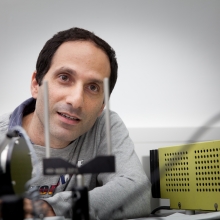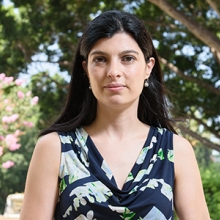The new hybrid mathematician
Dr. Ran Tessler is interested in answering mathematical questions that arise from string theory and statistical mathematics
New scientists

The idea of combining mathematics and physics to understand the world is as old as ancient shepherds contemplating the cosmos, Galileo considering space and time, and Newton applying calculus to study the laws of gravity. Nevertheless, as we enter the quantum age and begin to consider the space-time-gravitational properties of atoms and electrons, we need a new species of hybrid mathematician.
That’s just the kind embodied by Dr. Ran Tessler. If you’ve ever faced the frustration of trying to reconstruct a puzzle box—getting all the pieces to fit back together just perfectly, with no empty spaces—then you can appreciate the beauty of enumerative geometry. Enumerative geometry asks the question, “How many geometric structures of a given type satisfy a given collection of geometric conditions?”
Like so many mathematical concepts, this seemingly straightforward question is not so easily answered. Enumerative geometry was an active field in the 19th century, but many of its problems remained unsolved until a boost in the 20th century from a most unexpected source: string theory in physics.
Dr. Tessler, who specializes in physicsinspired mathematics, is interested in answering mathematical questions that arise from string theory and statistical mechanics. He has developed mathematical models for two-dimensional quantum gravity, a field of theoretical physics that seeks to unite Einstein’s theory of gravity with quantum physics.
In other aspects of his research, Dr. Tessler analyzes models of atomically disordered magnets (called spin glasses) and interacting particles, and uses ideas and tools from physics to solve problems in statistics and combinatorial mathematics. At the Weizmann Institute, in addition to continuing work on these topics, he plans to explore new physical theories that do not yet stand on rigorous mathematical grounds.
Bio
Dr. Ran Tessler earned his BSc summa cum laude in mathematics and magna cum laude in computer science from Tel Aviv University in 2002. After completing military service as an officer in the IDF Intelligence Corps and in the IDF officers’ training course, he entered the Hebrew University of Jerusalem for graduate studies. He completed an MSc (2010) and a PhD (2015) both in mathematics at the Hebrew University. From 2016-2018, Dr. Tessler was a Junior Fellow at the Institute for Theoretical Studies at ETH Zurich (the Swiss Federal Institute of Technology).
Dr. Tessler has received numerous academic awards and honors, including Rothschild Yad Hanadiv fellowship for postdoctoral studies (declined); the Yashinski Award from the Hebrew University of Jerusalem for his PhD (2013) and MSc work (2010); the Zafriri Award (2012); the Springer Award (2011); and the Klein Award (2009). He received a scholarship from Check Point Software Technologies for distinguished BSc studies in 2000.
Dr. Tessler is married, with one daughter. He enjoys trekking and water sports.









